|
|
 |  |  |
 |
Всего материалов в каталоге: 313
Показано материалов: 61-70 |
Страницы: « 1 2 ... 5 6 7 8 9 ... 31 32 » |
Bestiary |
Просмотров: 1605 |
Author: roman uchytel |
Добавил: rom-diz |
Дата: 11.01.2012
|
|
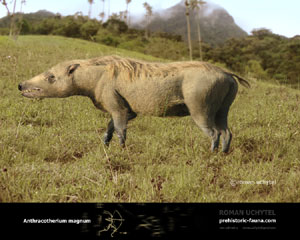 The original image size ( 300 dpi:) A-4+ (A-3) - 300$ A-5 - 150$ A-6 - 100$
Bestiary |
Просмотров: 1420 |
Author: roman uchytel |
Добавил: rom-diz |
Дата: 11.01.2012
|
|
Bestiary |
Просмотров: 3954 |
Author: roman uchytel |
Добавил: rom-diz |
Дата: 11.01.2012
|
|
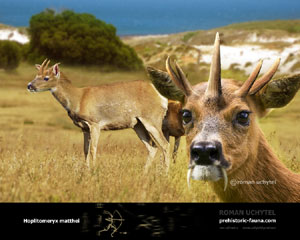 The original image size ( 300 dpi:) A-4+ (A-3) - 400$ A-5 - 200$ A-6 - 150$
Bestiary |
Просмотров: 1150 |
Author: roman uchytel |
Добавил: rom-diz |
Дата: 11.01.2012
|
|
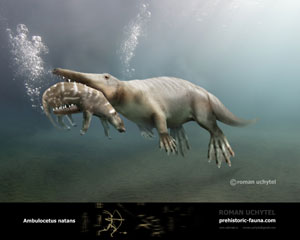 Ambulotsetus - genus of extinct cetaceans. One species is known -
Ambulocetus natans. He lived in the Eocene, in present-day Pakistan. Its
length was about 3 m and weighed about 300 kg. Externally they
resembled remotely a cross between a crocodile and a dolphin, with a
powerful tail and webbed feet adapted for movement in the water.
Probably, like modern crocodiles, they had waiting for a prey at the
bottom of the lake, jumped on it and dragged into the water. In the
water moved by means of movements back and tail in vertical direction.
On the land Ambulotsetus lumbered and never left far from the water. At
night this animal was on the shore, near the water. Ambulocetus,
with Pakicetus, belonged to Archaeocetes (the ancient whales) - a group
of animals of the order of cetaceans, from which later have occurred
modern whales.
The original image size ( 300 dpi:) A-4+ (A-3) - 300$ A-5 - 150$ A-6 - 100$
Bestiary |
Просмотров: 1282 |
Author: roman uchytel |
Добавил: rom-diz |
Дата: 11.01.2012
|
|
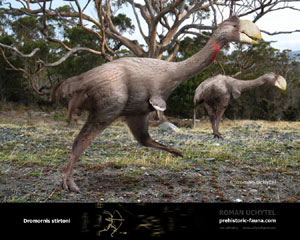 Dromornis stirtoni - an extinct family of Dromornithidae, one of the largest birds in the history of the Earth. These
birds belong to the order Anseriformes (Anseriformes) and were close
relatives of modern ducks and geese. At the height of Dromornis stirtoni
was about 3 feet and weighed about 500 kg. Lived in Australia, the
Middle Miocene, about 15 million years ago. They were probably
omnivorous. Previously it was thought that Dromornis stirtoni and
Epyornis maximus were the largest (heavy) birds in the history of the
fauna. However, recently paleontologists have found a skull of a
previously unknown species fororaka, who was given the name ( Kelenken guillermoi).
The original image size ( 300 dpi:) A-4+ (A-3) - 350$ A-5 - 200$ A-6 - 130$
Bestiary |
Просмотров: 1062 |
Author: roman uchytel |
Добавил: rom-diz |
Дата: 11.01.2012
|
|
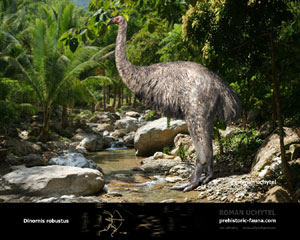 Moa – the giant birds that lived in New Zealand and became extinct at the end of the XVIII century. There
are 15 known species, among which Dinornis robustus and Dinornis
novaezelandiae are the largest. These two species reached a height of
3,5 m and weighed about 250 kg. They did not have wings, and even the
rudiments. Moa ate leaves, shoots and fruits. It is assumed that moa was
destroyed by Maori aborigines, for whom these birds were easy prey. The original image size ( 300 dpi:) A-4+ (A-3) - 200$ A-5 - 130$ A-6 - 100$
Bestiary |
Просмотров: 1217 |
Author: roman uchytel |
Добавил: rom-diz |
Дата: 11.01.2012
|
|
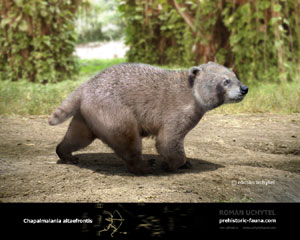 The
remains of Chapalmalania were found in South America, in areas
Chapalmal. Chapalmalania – a relative of raccoons (Procyonidae), who is
so larger than all other known members of this family, that he first
took for a bear. Sediments and chapalmalaliyas fauna show that the
Pliocene there was a plain or pampas with rich grasslands, some woody
vegetation and numerous streams. Rainfall was probably significant, but
the climate was at least as warm as present-day climate of this region;
it probably hasn’t had an impact of an approaching ice age. The
remains of Chapalmalania were found in South America, in areas
Chapalmal. Chapalmalania – a relative of raccoons (Procyonidae), who is
so larger than all other known members of this family, that he first
took for a bear. Sediments and chapalmalaliyas fauna show that the
Pliocene there was a plain or pampas with rich grasslands, some woody
vegetation and numerous streams. Rainfall was probably significant, but
the climate was at least as warm as present-day climate of this region;
it probably hasn’t had an impact of an approaching ice age.
The original image size ( 300 dpi:) A-4+ (A-3) - 500$ A-5 - 250$ A-6 - 150$
My Prints
Bestiary |
Просмотров: 1515 |
Author: roman uchytel |
Добавил: rom-diz |
Дата: 11.01.2012
|
|
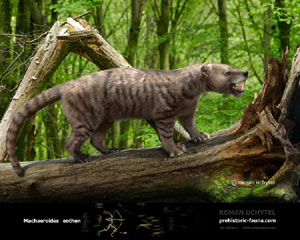 Machaeroides– saber-toothed
predators-creodontas not related to the cat family. Although they were
like a very big cats in their size, they hunted prey of their size,
because of specialization of saber-toothed in production of larger class
than insects, small lizards and birds. Their teeth are served for deep
penetration into the flesh. Machaeroides lived in the Early Eocene of North America in tropical rain forests. Machaeroides– saber-toothed
predators-creodontas not related to the cat family. Although they were
like a very big cats in their size, they hunted prey of their size,
because of specialization of saber-toothed in production of larger class
than insects, small lizards and birds. Their teeth are served for deep
penetration into the flesh. Machaeroides lived in the Early Eocene of North America in tropical rain forests. As a part of Machaeroidinae there are two genera – Machaeroides and Apataelurus. In turn, in the Machaeroideses genus there are two species: early Eocene small M.
simpsoni and latter (the end of Early Eocene) M. eothen. The second
types is larger and is known for finding a complete skull, femur,
humerus, bones of the forearm and hand.
The length of Machaeroides
from nose to tail base of over 60 cm at 30 cm in height. Probably, they
had wide half-plantigrade extremities. Finds massive limb bones, as a
small animal, assume strongly built and powerful predator.
The original image size ( 300 dpi:) A-4+ (A-3) - 300$ A-5 - 150$ A-6 - 100$
My Prints
Bestiary |
Просмотров: 1647 |
Author: roman uchytel |
Добавил: rom-diz |
Дата: 11.01.2012
|
|
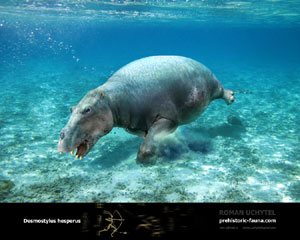 Desmostylus hesperus – extinct mammals that lived on the coast of the
North Pacific in the mid-Miocene period (15,8-12 million years ago). Their
teeth look like a bunch of columns, which reflects the name of the
animal. In Greek «desmosomes» - is a bunch, bundle, and «stilyus» - a
pillar, column. Desmostyluses have well developed fore and hind limbs
and adapted for rowing hands and feet (previously it was thought that
these animals were flippers). In water they are mainly rowing front
feet, as polar bears. Long shovel-shapped jaw animals are likely to
intensively used for plowing the sediment in search of benthic organisms
– the shells of mollusks, crabs and echinoderms. Desmostyluses reached 3
m in length, weighed 1200 kg. They were coastal lifestyle, good
swimming and diving, resting on the coastal rocks. During the breeding
season they were on the beach, though moved by land rather clumsily. The
length of the skull of the largest species, for example, Desmostylus hesperus, reaches 90 cm. Initially
Desmostyluses considered forward-relatives, but later failed to prove
their proximity to primitive Proboscidea and sirens. For the first
time the sirens and Desmostyluses combined into the one order. The
similarity with the elephants is noticeable in the presence of increased
upper and lower incisors, but also raised fangs (as opposed to
Proboscidea). Remains of Desmostyluses were found in California, Japan, Kamchatka and Sakhalin. The original image size ( 300 dpi:) A-4+ (A-3) - 500$ A-5 - 250$ A-6 - 150$
My Prints
Bestiary |
Просмотров: 1037 |
Author: roman uchytel |
Добавил: rom-diz |
Дата: 11.01.2012
|
|
|  |
 |  |  |
|
|

